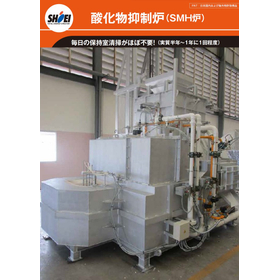[Technical Column] What are the differences between hardening, tempering, annealing, and normalizing?
Explaining heat treatment! By using different methods according to the purpose, it is possible to impart various properties to the products.
In this column, we will provide a detailed explanation of four representative heat treatment methods: "quenching," "tempering," "annealing," and "normalizing," aimed at those who have questions such as, "I want to know how to differentiate between the commonly used heat treatments of quenching, tempering, annealing, and normalizing," or "I want to use heat treatment to improve the quality of my company's products, but what methods would be best?" Each of the four heat treatments utilizes heat to change the structure of the steel material, and they are differentiated to achieve desired properties such as hardness and toughness. We will introduce the characteristics, applications, and temperature patterns of each heat treatment method in detail. *For more detailed information about the column, please refer to the related links. Feel free to contact us for more information.*
Inquire About This Product
basic information
*You can view the detailed content of the column through the related link. For more information, please feel free to contact us.*
Price range
Delivery Time
Applications/Examples of results
*You can view the detailed content of the column through the related link. For more information, please feel free to contact us.*
Company information
The manufacturing process of industrial products in all fields almost always includes a heating process. Due to the various factors such as the material, size, processing volume, temperature, ambient gas, and transportation method of the items being processed, heating devices, or thermal processing furnaces, will have different specifications. Our company has consistently responded to user expectations with a flexible design and manufacturing system. We have accumulated extensive experience and achievements across a wide range of materials, including metal materials and mechanical components, as well as electronic components made of glass and ceramics, magnetic materials, battery materials, and various powder materials, regardless of the target objects. In recent years, it has become rare for thermal processing furnaces to serve merely as heating devices, and there is often a demand for some additional functions. In addition to safety, energy efficiency, and automation, we actively incorporate advanced technologies to address environmental issues and enhance usability, going beyond merely following past technologies, and we will continue to create alongside our customers.









![Single End Radiant Tube Burner [TRF Burner]](https://image.mono.ipros.com/public/product/image/c08/2000793597/IPROS40624651388633756578.png?w=280&h=280)
![Inclined immersion type electric heater holding furnace [oxide reduction type]](https://image.mono.ipros.com/public/product/image/c7e/2000804160/IPROS67190141477188481135.jpeg?w=280&h=280)
![Butterfly Valve BV Series [2D/3D CAD]](https://image.mono.ipros.com/public/product/image/7a0/2000815776/IPROS65074472961613162442.jpeg?w=280&h=280)
![Venturi Mixer VM Series [2D/3D CAD]](https://image.mono.ipros.com/public/product/image/d2e/2000852305/IPROS58786938329892851049.png?w=280&h=280)